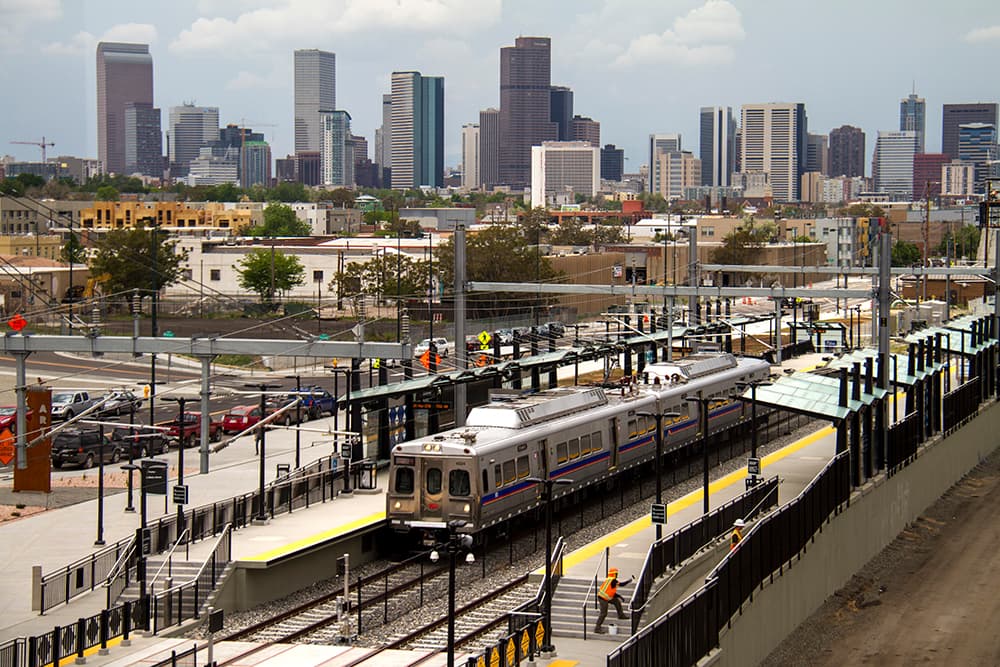Denver got a promising sign for its A-Line today: Starting Friday, RTD will begin to remove flaggers from some of the street-level crossings.
The Colorado Public Utilities Commission (CPUC) and Federal Railroad Administration (FRA) approved the departure of the crossing attendants at six of the 11 locations — Havana Street, Chambers Road, Clayton Street, Dahlia Street, Holly Street and Steele Streets. The process will happen in phases, with flaggers leaving at 6 p.m. Friday from Clayton, Steele, Holly and Dahlia streets, then at 6 p.m. Monday from Havana St. and Chambers Road.
It's been a long road (track?) to this point. Crossing-gate issues have plagued the commuter rail since it opened several years ago. Last year, RTD thought the problem was solved in April and again in August. In September, the FRA granted RTD a five-year waiver to operate A Line as well as the B Line, allowing RTD to submit a plan for the removal of the flaggers. That plan was approved in late March of this year.
“We are gratified that both the FRA and Colorado PUC have given approval to begin the removal process of flaggers from several at-grade crossings,” RTD General Manager and CEO Dave Genova said in a press release. “Over the past two years, we have safely and reliably carried more than 12 million passengers on the University of Colorado A Line. The flagger removal reflects the final approval by the FRA and CPUC that the University of Colorado’s A Line wireless crossing-gate technology is acceptable and effective.”
Though there are still five street-level crossings to go for the A-Line, this is good news for the future of the G-Line. The route out to Arvada and Wheat Ridge has had the same crossing-gate problems, but unlike the A-Line, it hasn't opened for public use.
The other big piece of this, according to RTD: It's a step toward establishing quiet zones along the A-Line.
Scott Reed, a spokesperson for RTD, said timing for the removal of flaggers at the rest of the A-Line's street-level crossings and the G-Line's eventual completion is still uncertain and is in the hands of regulators as they work their way through a queue of approval requests. When they're ready to begin, the G-Line will be required to run on the tracks for a number of weeks in "simulation of service" to prove that it's safe.
"It's not a backup, it just takes a while," he said. Denver is the first commuter rail line in the country that's using the new technology, he said, and that means the evaluative process also has some kinks to be worked out.
"It’s been difficult to establish a relevant testing process and analysis because it is brand new," Reed said. "We did not think it would take quite this long, it’s been worth it.”
It also means that Denver has become a model for other cities that hope to use wireless positive train control.
"We’re definitely seeing transit agencies all over the world kind of looking over our shoulders," Reed said.
The delays also mean increased costs associated for the Denver Transit Partners, the group who's in charge of financing, building and maintaining the A, G and B-Line infrastructure. Reed said there will likely be discussions about what line items might be reimbursed in the future, he said, "but it’s gonna be limited.”















